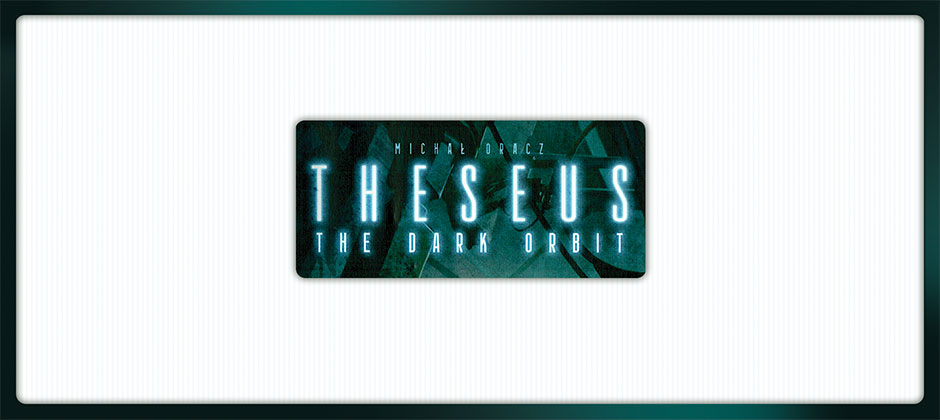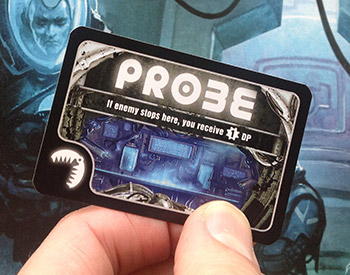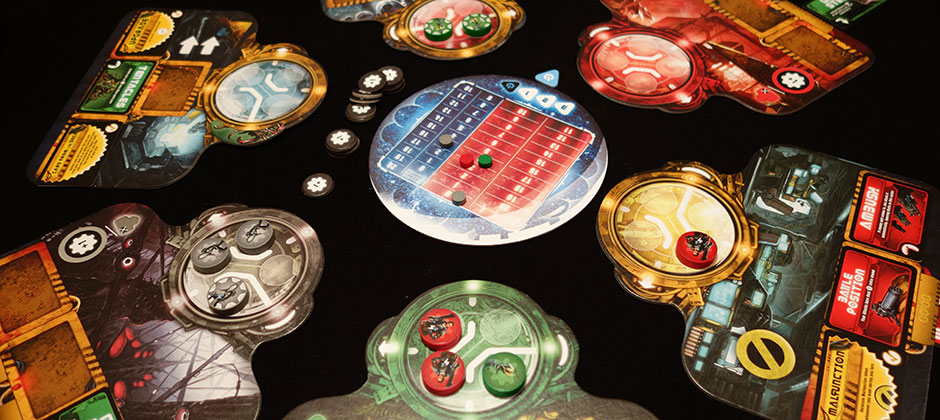
I am putting myself to the fullest possible use, which is all I think that any conscious entity can ever hope to do.
The EOG sends a small team of intrepid explorers aboard Theseus: The Dark Orbit.
I grew up on scifi films of the late 70s and 80s, classics like Ridley Scott’s Alien: the ragtag crew crammed together on an industrial ship or base in a hostile environment—space, the arctic, deep beneath the sea—struggling with alien invasion. The emphasis was on character rather than special effects, not only because special effects were expensive and difficult to create, but also because films didn’t have interminable CGI padding to fall back on in lieu of plot. That’s not to say that there weren’t a lot of really bad films in this style though: for every Alien, The Abyss and The Thing there were countless Saturn 3s and Galaxy of Terrors.
It’s refreshingly ‘hard scifi’ after the gothic excesses of Warhammer 40,000 and its copycats
Although Theseus: The Dark Orbit doesn’t feature any characters, there’s something about the game that reminds me of these films. It might be as obvious as the fact that one of the factions in the game are Gigeresque aliens, or it might be that it is so refreshingly ‘hard scifi’ after the gothic excesses of Warhammer 40,000 and its copycats.
Portal Games are a Polish publisher responsible for such popular games as Neuroshima Hex and Robinson Crusoe: Adventures on the Cursed Island, and they’re bringing out some very attractive games. Theseus: The Dark Orbit is not only good-looking, but it’s an engagingly fresh blend of mechanics and theme that initially seems complicated but quickly reveals itself to be simple and ingenious.
The initial impression of complication is partly due to the manual; for example, breaking up the rules into separate boxes with busy backgrounds impedes the flow of communication. Once you get the hang of things however, the rules are pretty straightforward. Each round begins with a movement phase in which a player chooses one of their units and moves it clockwise around the sectors that are set up surrounding the central scoring board. Units must move a number of sectors equal to the number of units in the sector they started in. Why units can only move clockwise, and why they move faster if there are more units in their sector, isn’t satisfactorily explained in thematic terms, but this is a game, not a simulation, after all!
In the sectors are a number of spaces where players will be installing their Faction cards. A moving unit may set off a trap on one of these cards, or trigger a combat in its destination sector if its movement results in the sector being filled with the maximum number of four units. After this, the moving unit may perform any special action that the sector features. Finally, you may either place one of your faction cards in a Pending card slot in the destination sector, or replace an enemy card in a slot with one of your own, or install one of your cards already in the sector’s Pending card slot into a free space anywhere in any sector.

The dreaded Probe
When combat takes place (what the game calls an ‘onslaught’)—either a local conflict triggered by filling a sector’s unit spaces, or a sector-wide series of combats triggered by the Corridor sector action—the attack type on a unit indicates how many units it can wound. Wounds are recorded on the central scoring board; individual units are not removed, but instead wounds are taken from a shared ‘pool’ of points. In a two-player game, if you’re reduced to zero Life Points you lose. Two of the less combat-oriented factions can also win by accruing Data Points.
And that, in a nutshell, is it. Of course the cards introduce all manner of complications to the basic system, and are the meat of the game. Each faction’s cards (you randomly choose 15 cards per game out of a possible 25) fit the theme of the faction wonderfully: the Marines, for example, are all about attacks, ambushes and violence. The Scientists record data with camcorders and, well, use science. And the alien Greys are stealthy and have the ever popular Probe (you can be sure that lead to some jokes around the table that lasted the entire game). Placing the cards in the right places to spring their affects on your opponent(s)—or on yourself, if their effects are positive—is the key to winning.
You can also accrue Uprade tokens to increase the effectiveness of certain cards and upgrade your units (thus flipping them to a more combat/data-collection-effective side). The Control Room sector action allows you to move a Malfunction token around the board, shutting down the abilities of a chosen card. And the Tech Bay gives allows you to move an extra unit during your turn. There are also Bonus cards on some of the installed slots at the start of the game which you can grab and use.

Interestingly, the movement mechanic results in a game with a bit of a split personality. In a two player game, it’s possible to do quite a bit of clever thinking ahead to map your moves and your opponent’s; resulting in a much more strategic experience. Start introducing more players however, and the chaos ramps up considerably, because it’s impossible to predict with any certainty who will be where at what time (there’s also a thematically clunky rules change: you collect Life Points when you win combats instead of losing them). Personally, I found both games a lot of fun, but players who rail against chaos in their game experiences will probably not enjoy the multiplayer game as much. Another option is team match play. In any case, you’ll find yourself pleasureably dizzy as you map the clockwise movements of your pieces in your head before making your decisions.
An expansion is already on the way which promises a robot faction
Apart from the aforementioned rulebook layout, the game is a very attractive beast, with colourful, clear graphic design that conveys the theme well. I particularly like how the faction cards have a brief bit of explanatory text on the front, but a more detailed explanation on the back should you require it (and the more complex cards have even more detailed coverage in the rulebook). I love the unit tokens, which are coloured wooden disks with stickers on them much like those in Mall of Horror; they have a heft to them that makes them far superior to cardboard tokens.
While a fifth faction, the Pandora, is included as a ‘bonus’ in the game, an expansion is already on the way which promises a robot faction, a new sector board, and, according to Portal’s Ignacy Trzewiczek, “big mechs, and some machines, some pipes, start to attack people”. Sounds great!
Theseus: The Dark Orbit is the kind of game I’m always happy to play: a tight, thematic, not too complicated game with attractive graphic design and a strong atmosphere. It feels and plays like something different, a breath of fresh air after the last few years of rehashed game systems and Kickstarter copycats.
Actually, thinking about those old movies gives me a great idea for another faction. A rogue master computer aboard the space station begins killing off the intruders one by one. Now, if we could only introduce some unique characters to Theseus …
Thanks for another great review.
You’re welcome WonderSlug! Glad you enjoyed it.